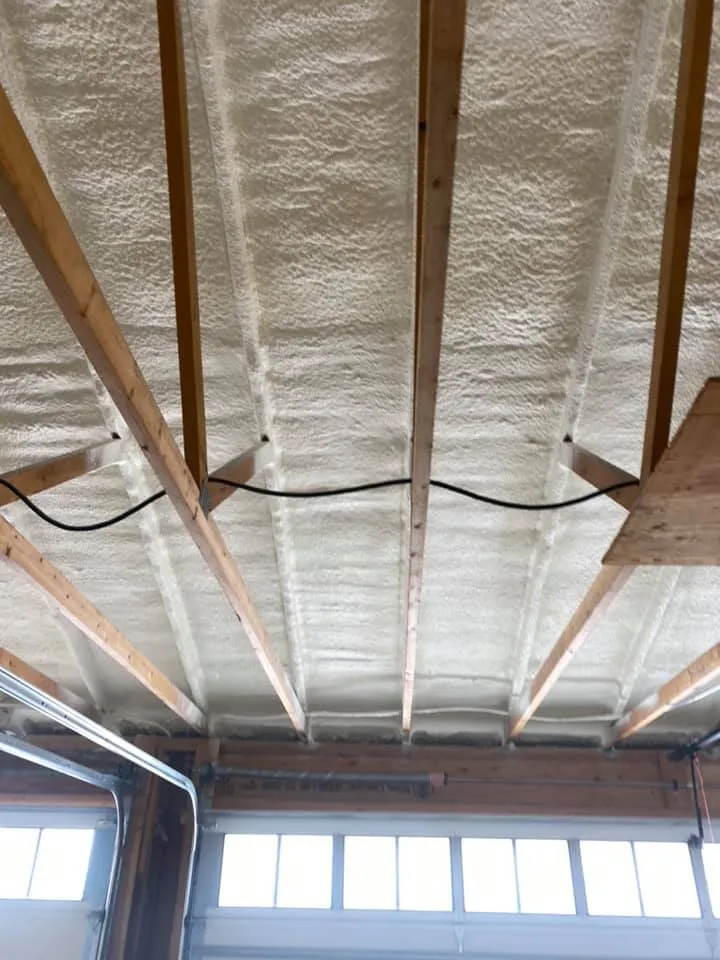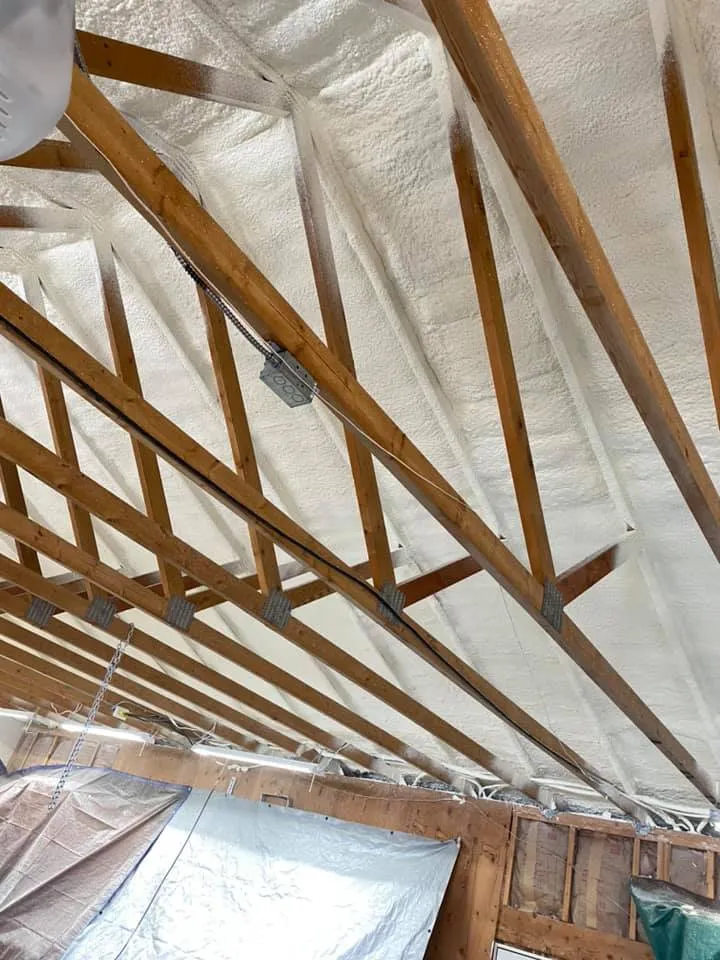
Closed-cell spray foam is a highly effective material for protecting wooden beams in Evanston, Wyoming, primarily because it creates a durable, monolithic barrier against the two biggest threats to wood’s structural integrity: moisture and air infiltration. By adhering directly to the wood, it seals every crack and crevice, preventing water vapor from condensing on cold surfaces. This is especially important in a climate like Evanston’s, where drastic temperature swings between day and night can cause significant condensation. The rigid, dense structure of closed-cell foam also adds a degree of structural reinforcement to the beams it covers.
This article provides a detailed look at how this material works to preserve wood structures, the specific advantages it offers in our local climate, and what you need to know before considering it for your property. The information is based on extensive field experience and an understanding of building science principles as they apply to homes in the Rocky Mountain region.
Wooden beams in crawl spaces, basements, and attics are constantly exposed to environmental pressures. In Uinta County, the primary driver of wood degradation is moisture, which is amplified by our distinct seasonal patterns.
When warm, humid indoor air comes into contact with cold surfaces, like wood beams in an unconditioned crawl space during winter, the moisture in the air condenses into liquid water. This process is a leading cause of wood rot and decay. According to building science expert Dr. John Straube of the Building Science Corporation, this constant moisture exposure is the primary catalyst for fungal growth in modern building assemblies. According to the U.S. Department of Energy air movement accounts for more than 98% of all water vapor movement in building cavities. When this moisture-laden air infiltrates gaps around wooden framing, it sets the stage for long-term damage.
Over time, this repeated moisture exposure can lead to:
Closed-cell polyurethane foam acts as three products in one: an insulator, an air barrier, and a moisture barrier. This combination is what makes it so effective for protecting wood.
The defining characteristic of closed-cell foam is its low vapor permeability. It has a perm rating of less than 1.0, which classifies it as a Class II vapor retarder. Information from the Spray Polyurethane Foam Alliance confirms that this resistance prevents water vapor from passing through and reaching the wood surface. Unlike fibrous insulation like fiberglass, which can absorb and hold moisture against the wood, closed-cell foam repels it entirely.
Bonus Tip: Before application, it’s essential to ensure the wood’s moisture content is below 19%. Applying foam over damp wood will trap the moisture in, accelerating decay instead of preventing it. A professional will always take moisture readings before starting work.
Because it’s applied as a liquid that expands, spray foam fills every gap, crack, and imperfection in the building assembly. This creates a continuous air seal that stops drafts and, more importantly, halts the movement of moist air. By preventing air from flowing through the building envelope and contacting the wood, the potential for condensation is nearly eliminated.
The rigid nature of cured Closed-cell foam adds racking strength to the walls and roof assemblies it’s applied to. When it bonds to the sheathing and framing members, it essentially glues the components together, increasing their resistance to shearing forces from wind and snow loads. This can be a secondary but significant benefit for older homes or structures in high-wind areas.
To understand why closed-cell foam is often recommended, it helps to compare its key properties against other common insulation materials.
| Feature | Closed-Cell Spray Foam | Open Cell Spray Foam | Fiberglass Batts |
|---|---|---|---|
| Moisture Resistance | Excellent (repels water) | Poor (absorbs water) | Poor (absorbs water) |
| Air Sealing | Excellent (monolithic seal) | Good (air permeable) | Poor (allows air passage) |
| Structural Support | Yes (rigid and dense) | No (soft and spongy) | No (no structural value) |
| R-Value per Inch | ~R-6.5 | ~R-3.7 | ~R-3.2 |
For direct application to wood in areas like crawl spaces or rim joists where moisture is a concern, closed-cell foam is clearly the superior technical choice.

Before choosing closed-cell spray foam, there are several factors to evaluate to ensure it’s the right solution for your property.
Upfront Investment: Closed-cell spray foam generally has a higher initial cost than traditional insulation materials. However, this cost should be weighed against the long-term value of preventing costly structural repairs, improving energy efficiency, and increasing home comfort.
Ultimately, closed cell spray foam protects wooden beams by creating a stable, dry, and airtight environment. It directly addresses the root causes of wood decay common in our region by blocking moisture and stopping air leakage. For homeowners in Evanston looking for a long-term solution to preserve their home’s structural foundation, it offers a powerful combination of benefits. Before moving forward, evaluate your home’s specific conditions and long-term goals to ensure it aligns with your needs.
To understand if this solution is right for your property’s specific conditions, a professional evaluation is the best next step. For a detailed inspection and consultation, you can connect with High Country Solutions. Reach out via email at [email protected] or by phone at (307) 248-9063 to discuss your project.
When applied correctly to dry wood, closed-cell spray foam prevents wood rot. The problems you may hear about are almost always caused by applying foam over wood that is already wet, which traps moisture against the wood and accelerates decay.
Closed-cell spray foam offers one of the highest R-values per inch of any common insulation material, typically ranging from R-6 to R-7 per inch of thickness.
It is strongly advised against. DIY kits lack the power and temperature control of professional equipment, often leading to a poor chemical mix and ineffective insulation. Installers also use specialized personal protective equipment (PPE) to safely handle the chemicals during application.
Evanston’s cold, snowy winters and significant daily temperature fluctuations create a high potential for condensation. Heavy snow buildup on roofs can lead to ice dams and water intrusion, while cold crawl space walls can cause moisture to collect on floor joists. Closed-cell foam directly counters these climate-specific threats.